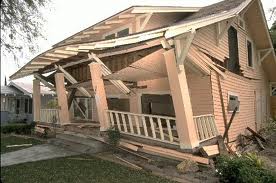
 There is a tendency in Southern California to assume more earthquakes happen in the fall and winter — particularly if the weather is cool and wet followed by a hot dry spell. It’s not uncommon to hear someone say “this is typical earthquake weather.” According to the United States Geological Survey, however, “earthquake weather” is a myth.
There is a tendency in Southern California to assume more earthquakes happen in the fall and winter — particularly if the weather is cool and wet followed by a hot dry spell. It’s not uncommon to hear someone say “this is typical earthquake weather.” According to the United States Geological Survey, however, “earthquake weather” is a myth.
Earthquakes are caused by tectonic forces—or movement of areas of the earth’s crust against one another. I find it particularly interesting that the San Andreas fault plates run north-south, so Los Angeles will eventually end up next to San Francisco. Imagine what that will do to the housing market!
With that being said, all of us who’ve lived through an earthquake know that the shaking, rolling, and swaying are very,very real, as is the damage left behind. It’s very important to make sure that when you purchase a property, you give yourself the best chance to be properly protected in case of an earthquake.
To lessen the possible damage caused by a quake, the most important factor to consider is whether or not the foundation of the house is “bolted”, or seismically retrofitted — meaning the connections between a house and its foundation are reinforced using specialized hardware and engineering methods. In the event of an earthquake, bolting reinforces the structure of a house and in some cases, prevents structural damage. To obtain earthquake insurance, your house must be bolted.
In addition to bolting, there are many things you can do to make your home sturdier such as strapping your hot water heater to wall studs, re-pointing mortar joints and replacing rotted or damaged wood. Also, a wooden structure tends to hold up better in an earthquake than a brick one, so the majority of homes in Southern California are built with wood, unlike the brick and stone homes you may find in many other parts of the US.
Other things you can do to lessen the damage during a quake are:
• Install latches on cupboards, particularly ones holding valuable or breakable contents.
• Bolt bookcases to the wall.
• Know how to locate and turn off water, gas and electrical mains.
• Check the wall-hangings and artwork in your home, particularly over beds, to make sure it it attached securely.
• Keep a supply of canned food, an up-to-date first aid kit, 3 gallons (11.4 liters) of water per person, dust masks and goggles, and a working battery-operated radio and flashlights.
For more information about how earthquakes affect property, or to get in touch with a seismic retrofitter, please contact Heart Realtors at [email protected].





Be the first to comment